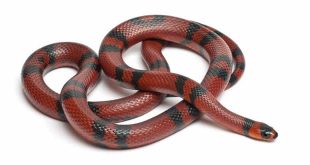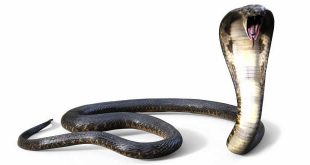 Coral Snake — The coral snakes are a large group of elapid snakes that can be divided into two distinct groups, New World coral snakes and Old World coral snakes. There are three genera among New World coral snakes that consist of over 65 recognized species.
Coral Snake — The coral snakes are a large group of elapid snakes that can be divided into two distinct groups, New World coral snakes and Old World coral snakes. There are three genera among New World coral snakes that consist of over 65 recognized species.
Coral snakes are most notable for their red, yellow/white, and black colored banding. Several nonvenomous species have similar coloration, however, including the Scarlet King snake and the Milk Snake. In some regions, the order of the bands distinguishes between the non-venomous mimics and the venomous coral snakes, inspiring some folk rhymes — “Red and yellow, kill a fellow, red and black, venom lack”. However, this only reliably applies to coral snakes in North America: Micrurus fulvius, Micrurus tener, and Micruroides euryxantus, found in the south and eastern United States. Coral snakes found in other parts of the world can have distinctly different patterns, and can even have red bands touching black bands, have only pink and blue banding, or have no banding at all.
Most species of coral snake are small in size. North American species average around 24” in length, but specimens of up to 60” or slightly larger have been reported. Aquatic species have flattened tails, to act as a fin, aiding in swimming.
Coral snakes vary widely in their behavior, but most are very elusive, fossorial snakes which spend the vast majority of their time buried in the ground or in leaf litter of a rainforest floor, only coming to the surface during rains or during breeding season. Some species, like Micrurus surinamensis are almost entirely aquatic and spend most of their lives in slow moving bodies of water that have dense vegetation.
Like all elapid snakes, coral snakes use a pair of small fangs, which are fixed in the front of their top jaw, to deliver their venom. Due to the time it takes for the venom to take effect, coral snakes have a tendency to hold on to a victim when biting, unlike vipers which have retractable fangs and tend to prefer to strike and let go immediately. Coral snakes are not aggressive or prone to biting however, and account for less than a single percent of the number of snake bites each year in the United States. Most coral snake bites occur because of accidental handling of the snake while engaged in an activity like gardening.
 Kids Portal For Parents India Kids Network
Kids Portal For Parents India Kids Network


